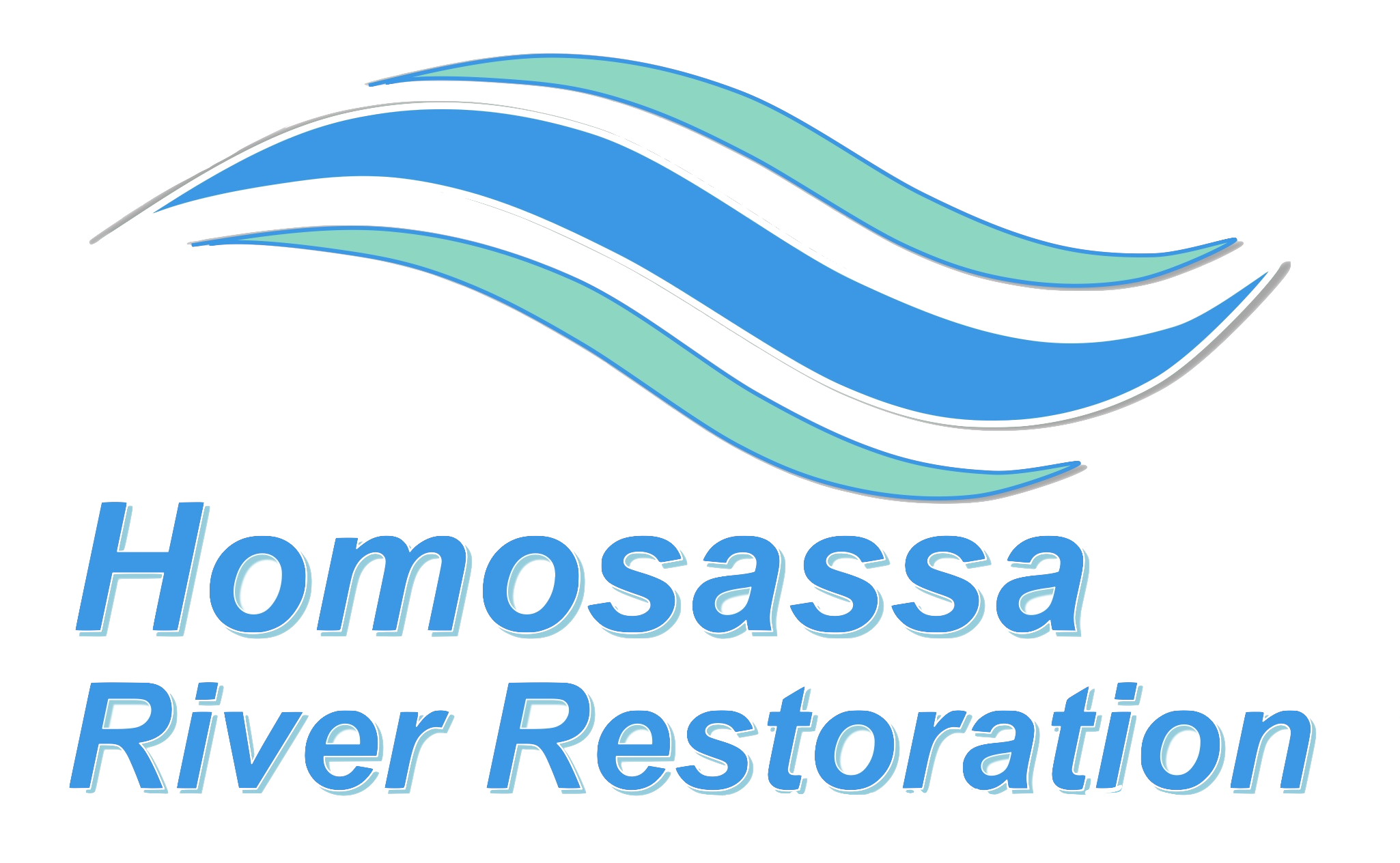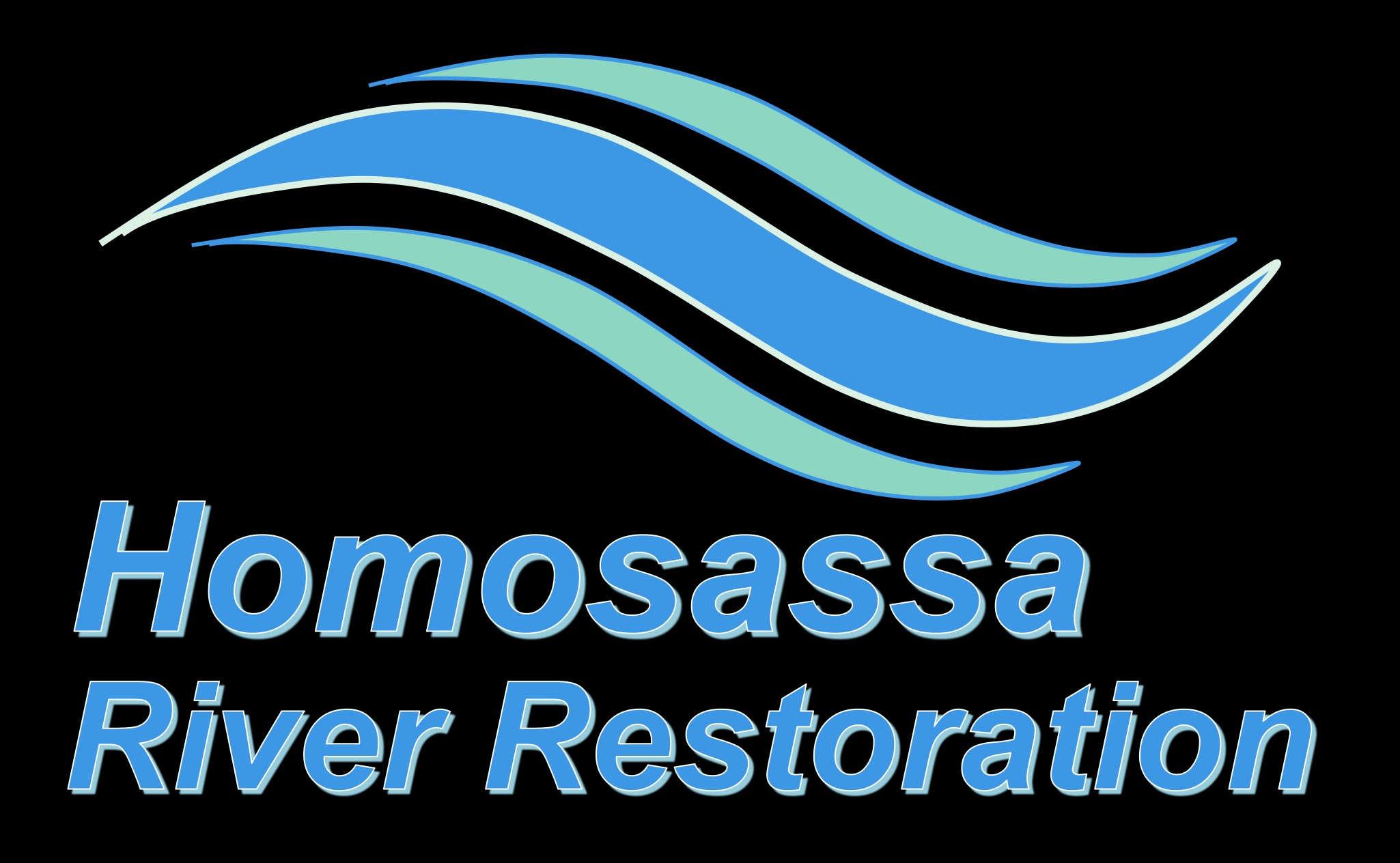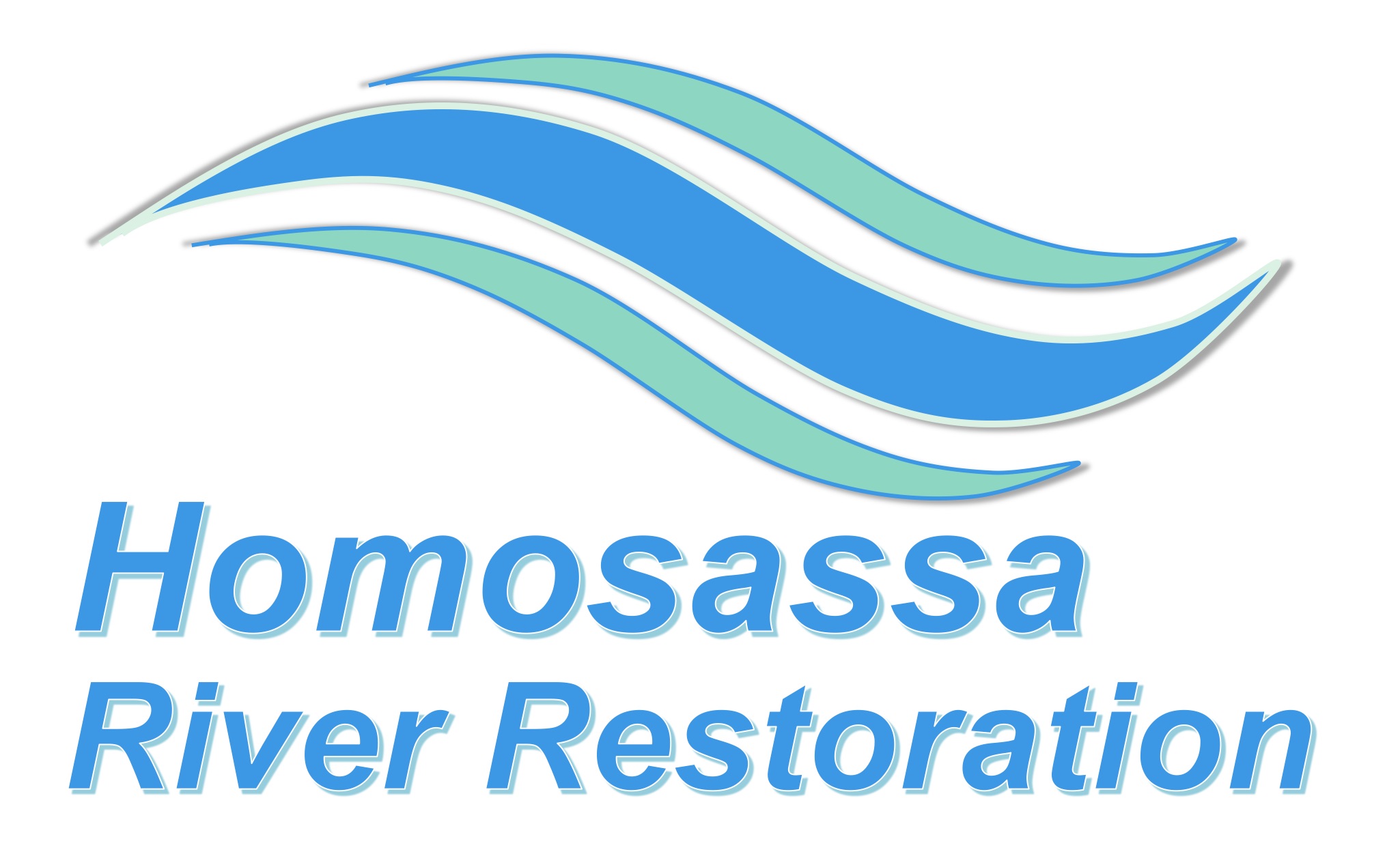Plan, Permit, Perform
The Florida Department of Environmental Protection (DEP) approved our plan to restore 24 acres of the Homosassa River. We are permitted to restore the aquatic habitat. The approval is part of their efforts to protect springs. Those 24 acres lie at the headwaters of the river and they are shown as Phase 1 and Phase 2 in the image below.
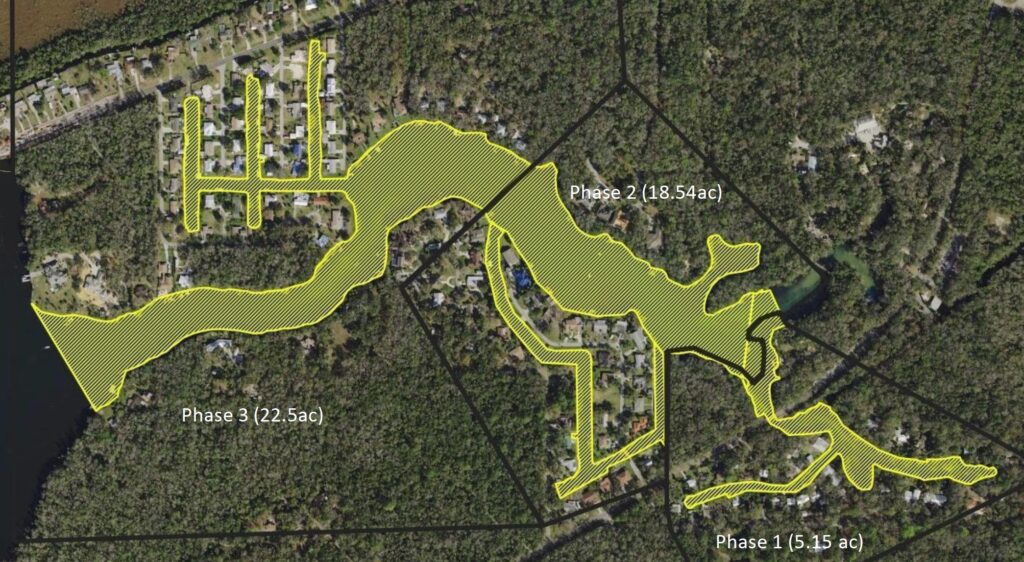
We can only complete a portion of the “in the water” restoration in one year. We begin our work in the far eastern parts of the river.


The State has not funded all three phases shown here. Only one phase is funded so far. We have DEP permission for phases 1 and 2. State funding for 2020 is only for phase 1.
The 2020 Restoration Area: Phase 1
Restoration begins in Phase 1. The Phase one area is colored purple on the image immediately above. The Homosassa River Restoration Project, Inc. (HRRP) is the non-profit organization managing this restoration. HRRP’s goal is to restore and preserve the ecological integrity of the Homosassa River system. Learn more about the organization here.
In 2020, HRRP is creating a site for the heavy mechanical work that will separate water from muck. The installation separates trash and solids, organic waste, and water. That worksite is a de-watering operation. Using a pumping system, a floating vacuum system removes organic waste (and water) from the river’s bottom. Then that system pumps water and waste back to the de-watering station, leaving a sandy clean river bottom.
The de-watering station removes organic debris from the water, leaving it more than 99% pure. That pure water goes back into the river.
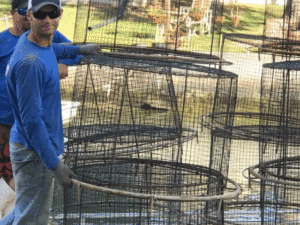
Then divers plant eelgrass, and cover those plants with cages. Cages are officially known as “GROW SAV herbivory exclusion devices.” We’ll just call them “cages” or “exclusion cages” here. The cages are fastened to the river bottom and prevent hungry manatee and boaters from destroying or uprooting the young plants. We clean these “exclusion cages” regularly for a year. We also remove any large amounts of algae or invasive aquatic plants while scrubbing the cages clean.
Cages aren’t very visible from the surface. We don’t use them in areas where they are exposed by low tide. Cages are only used where the water is more than 4 feet deep.
Finally, we remove the cages after a year. By this time the grasses have spread out between the cages, and lush fields of eelgrass can cover large portions of the restoration area.
Additional State Restoration Projects helping to improve the Homosassa River
The Florida Department of Environmental Protection (DEP) lists projects directly related to Homosassa River water quality. Find the Florida Springs Restoration Projects for 2019 and 2020 here. One of the DEP projects is the Homosassa East and Downtown Septic to Sewer project. This project is for the “design, permitting and construction of a sanitary sewer collection system.” It will “remove from service a minimum of 200 existing septic tanks” in the Homosassa Downtown East area.
“Improving our five first-magnitude springs is a key priority for our District,” said Brian Armstrong, the District’s executive director. “Thanks to the ongoing financial support from Governor Ron DeSantis, the Legislature and the Florida Department of Environmental Protection (DEP), we are launching a new initiative to fund septic to sewer conversion projects that will reduce nitrogen and improve the health of our springs.” Source.
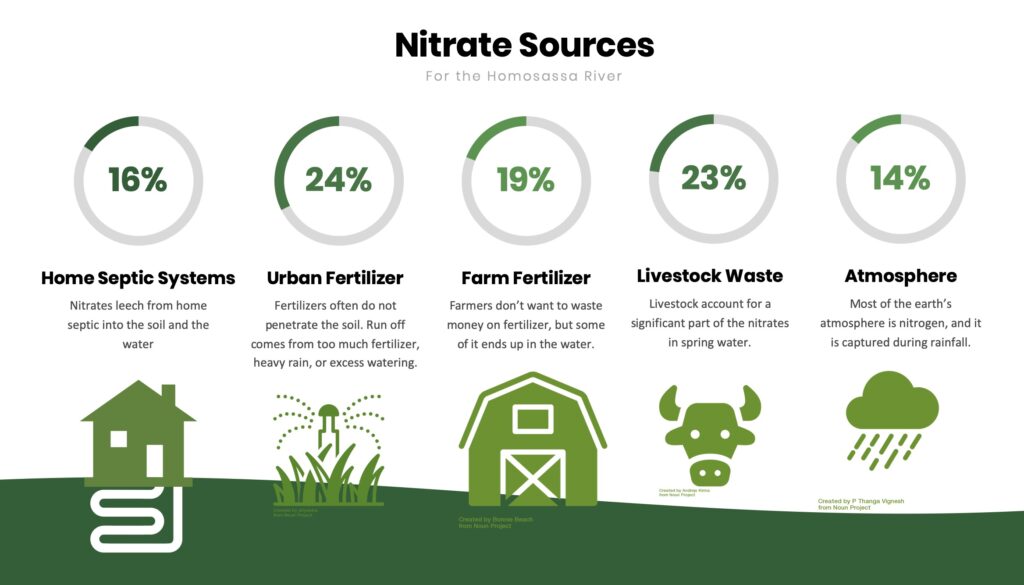
The State of Florida’s Surface Water Improvement and Management (SWIM) plan contains other projects to decrease nitrogen in the Homosassa River. Nitrate levels in springs feeding the Homosassa river have increased steadily for over 25 years.
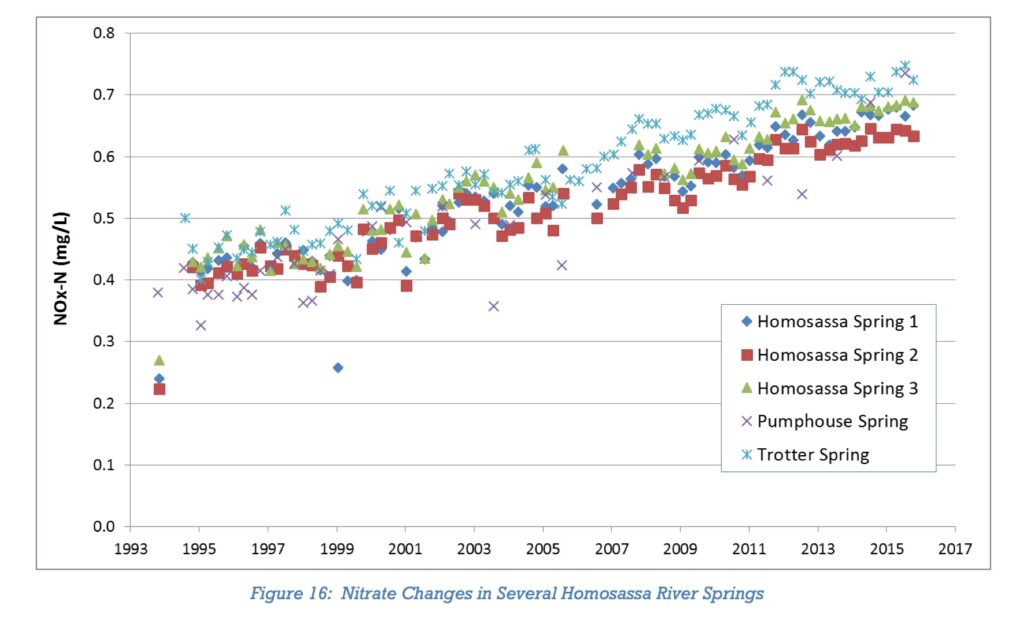
2020 – 2023 Plans
In 2020, the Homosassa River Restoration Projects goal is to complete the land de-watering setup. HRRP will also remove, replant and maintain 5.15 acres of the river and adjacent canals. This amount is only about 20% of the 23.7 acres permitted by the DEP and Army Corps of Engineers.
But going forward, the HRRP goal is to restore a total of 46.19 acres by 2023.
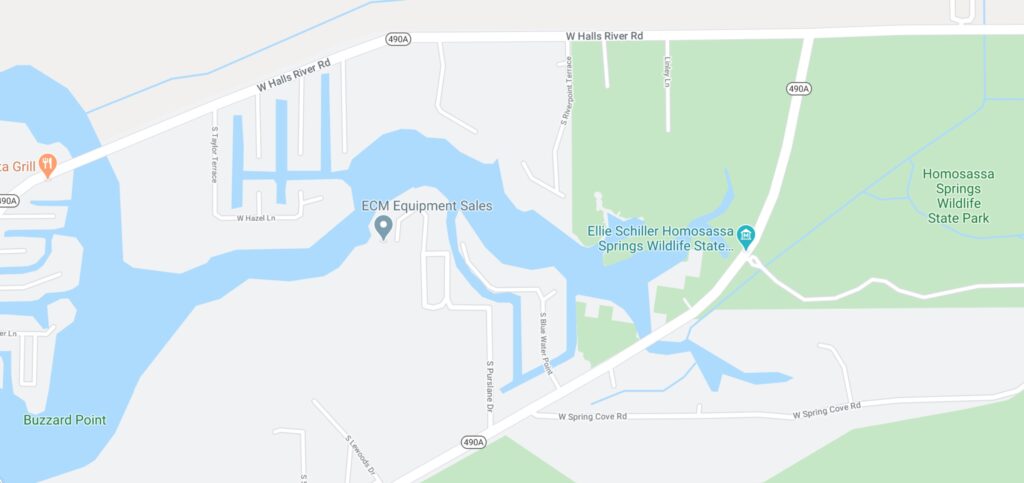
There is no funding yet for continued work after 2020. We plan to maintain river eelgrass plantings for 12 months, and to perform an occasional touch up to the restored areas.
Success
Success is a cleaner river. And success is a river with grasses providing a home for dozens of other species. Grasses can spread quickly and act as a nitrate absorbing system. It means less Lyngbya algae, and more fish, crabs, and invertebrates.
Success means cooperation. And it means removing muck and replanting, but also taking full advantage of other State of Florida DEP efforts. When septic systems release fewer nitrates, and runoff/aquifer contamination from residential and agricultural fertilizer and livestock goes down, the river benefits.
The river will be well on the way to looking like a different place when it has enough plants to absorb the nitrates. River flow can increase if muck does not clog spring vents and boils. The nitrate load comes down as more homes move off septic systems and fertilizer use improves. Success means a better river flow, better habitat for more species, and less nitrate pollution overall.
This web page documents one part of the progress made to restore the Homosassa River. Return here to see how the State of Florida’s Springs Funding is working to give us back a natural gem.
